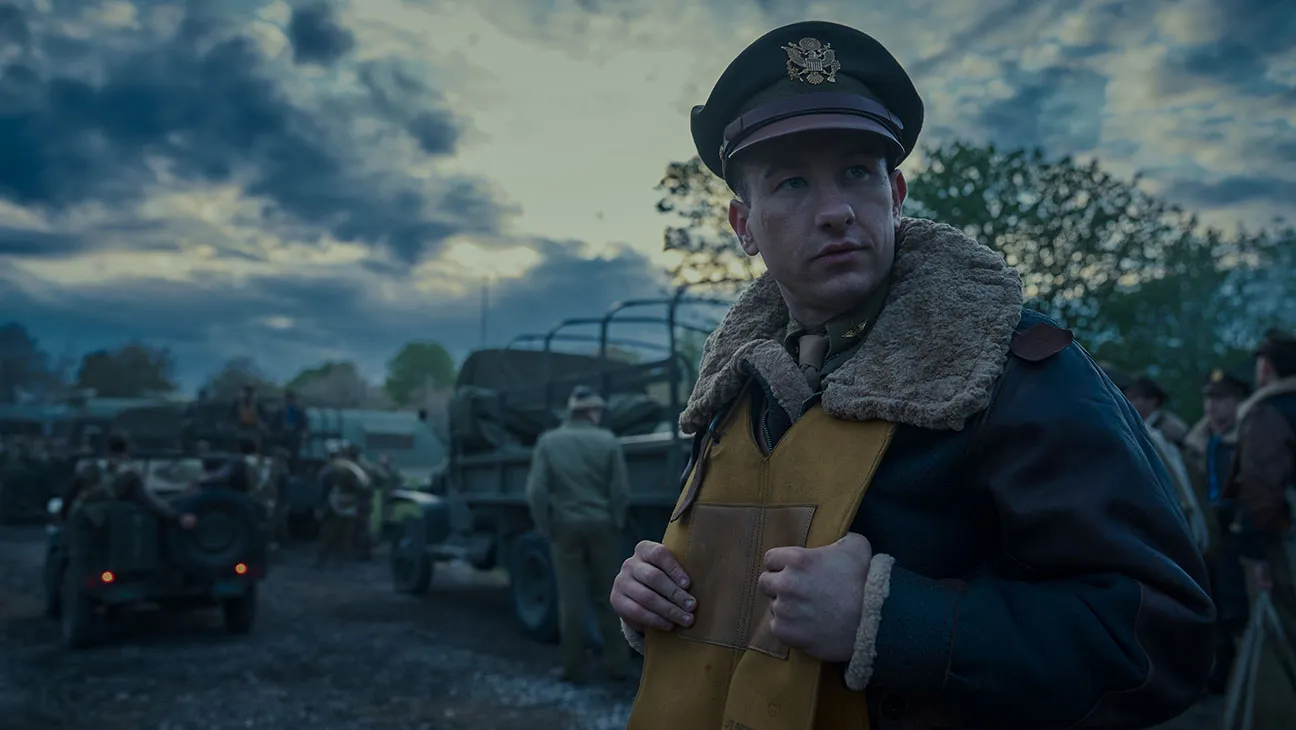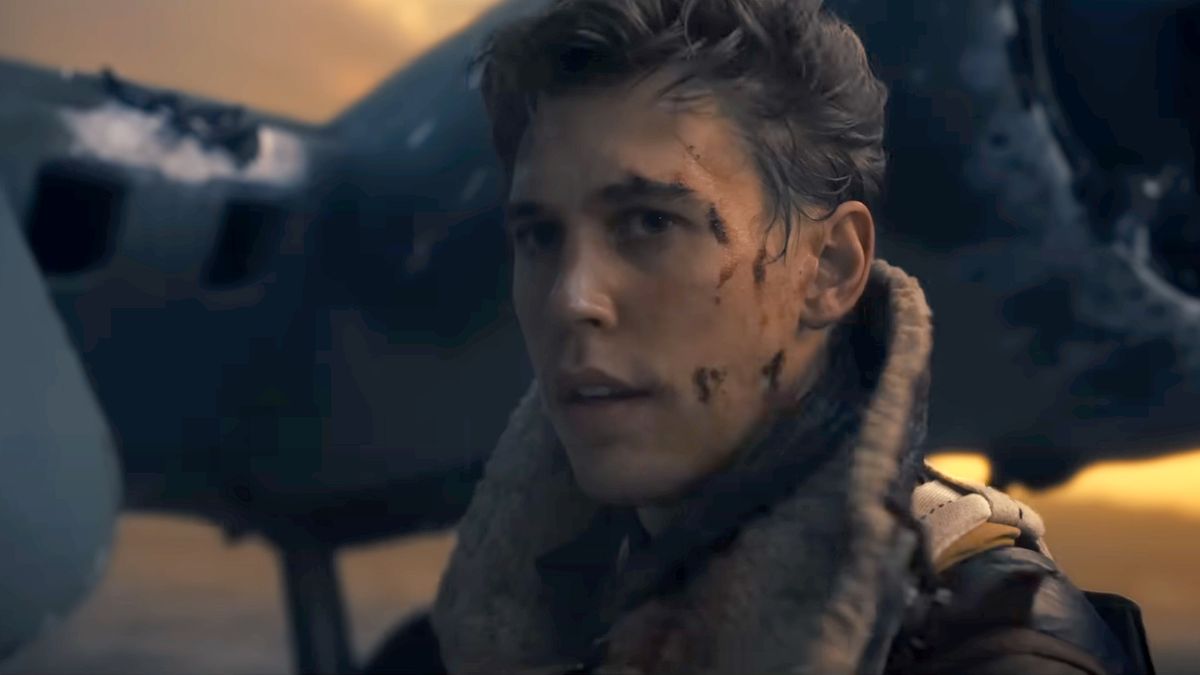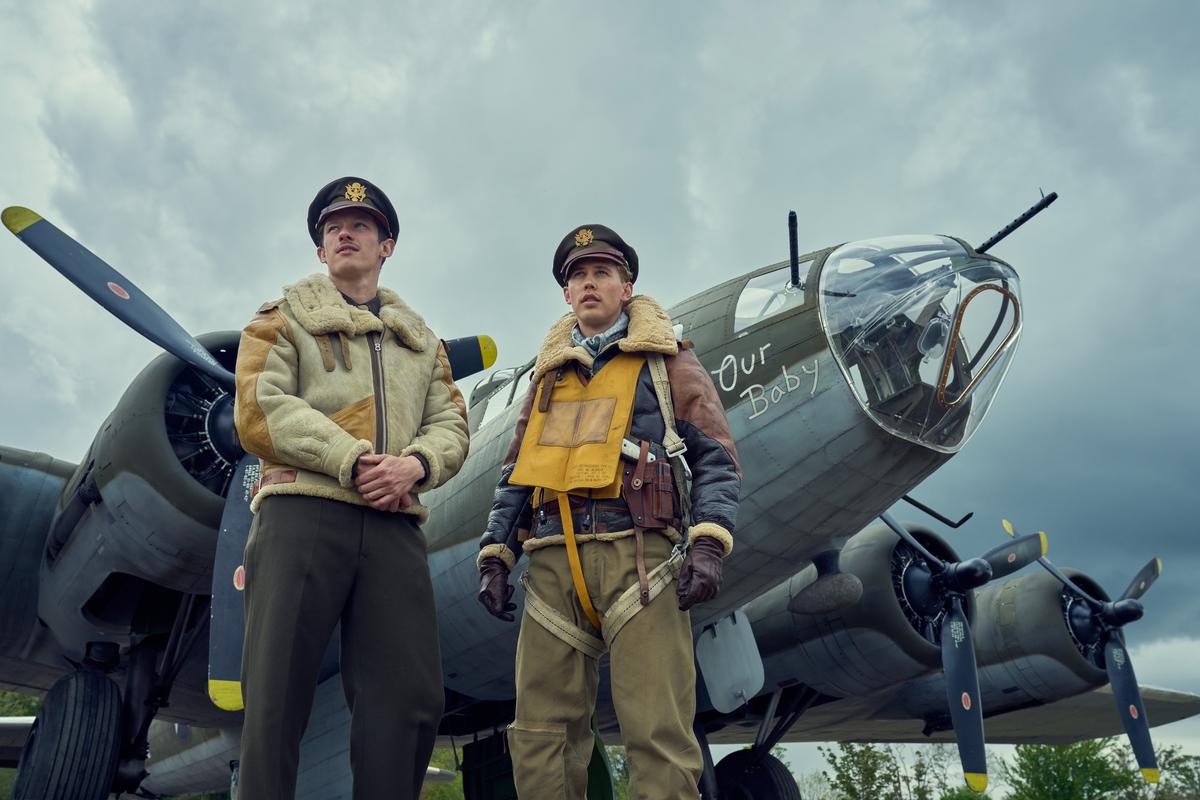In the vast expanse of World War II narratives, a new chapter unfolds with Apple TV+’s “Masters of the Air,” a series that, while not a sequel, serves as a profound companion piece to the legendary “Band of Brothers.” Under the visionary guidance of Tom Hanks and Steven Spielberg, this new endeavor promises to captivate audiences with the untold stories of aerial bravery and sacrifice.

The Genesis of a Companion Piece
Produced by the acclaimed duo of Hanks and Spielberg, “Masters of the Air” embarks on a journey that is both distinct and complementary to their previous works, “Band of Brothers” and “The Pacific.” With a staggering budget estimated at $250 million, it’s Apple TV’s most ambitious project to date, aiming to shed light on the “Bloody Hundredth,” a bomb group renowned for its perilous daylight missions over Nazi-occupied Europe.

Starring Austin Butler as Gale “Buck” Cleven and Callum Turner as John “Bucky” Egan, the series delves into the camaraderie, valor, and heartbreak of those who took to the skies in the deadliest of circumstances. The ensemble cast, featuring talents like Barry Keoghan, Ncuti Gatwa, Nate Mann, and Anthony Boyle, further enriches the narrative tapestry of wartime heroism.
Not a Sequel, But a Continuation of Legacy
While it stands on its own, “Masters of the Air” is intricately linked to its predecessors through its creators’ shared vision and the backdrop of the Second World War. This new series echoes the thematic essence and historical rigor of “Band of Brothers” and “The Pacific,” yet it carves out its own identity by focusing on the aerial battles that were crucial to the Allied victory.
The series draws inspiration from Donald L. Miller’s authoritative book, “Masters of the Air,” which Spielberg and Hanks, alongside Gary Goetzman, adapted into a narrative that explores the psychological and physical toll on the airmen of the 100th Bomb Group. It’s a tribute to their courage, detailing the harrowing experiences at 25,000 feet – from the biting cold to the oxygen scarcity and the constant threat of enemy fire.
Having seen episode 3 of Masters of the Air, I’m glad to say that Austin Butler’s characterisation of Buck as a man of few words is paying off, in part because his ability to express emotion with his eyes is rock solid. The acting from everyone is great, actually. So moving. pic.twitter.com/OPajiMuyko
— Shiro (@Shiro355236) February 3, 2024
A Tale of Heroism and Humanity in Masters of the Air
“Masters of the Air” transcends the conventional war story by highlighting the personal sacrifices and psychological impacts on the young men who braved the unfriendly skies. Their stories of survival, capture, injury, and death reveal the human cost of war, underscoring the series’ intent to honor their legacy beyond the battlefield triumphs. This series, much like its spiritual predecessors, serves as a poignant reminder of the complexities of war and the indomitable spirit of those who fought in it.

As we venture into the skies with “Masters of the Air,” we’re invited to reflect on the multifaceted nature of heroism, the bonds forged in adversity, and the enduring impact of the Greatest Generation’s aerial warriors. With “Masters of the Air,” viewers are set to embark on a new journey through the annals of World War II, one that promises to be as educational as it is emotionally compelling.
In paying homage to the airmen of the 100th Bomb Group, the series ensures that their bravery and sacrifices are immortalized for generations to come, adding a new dimension to the legacy of “Band of Brothers” and enriching the tapestry of World War II narratives.










